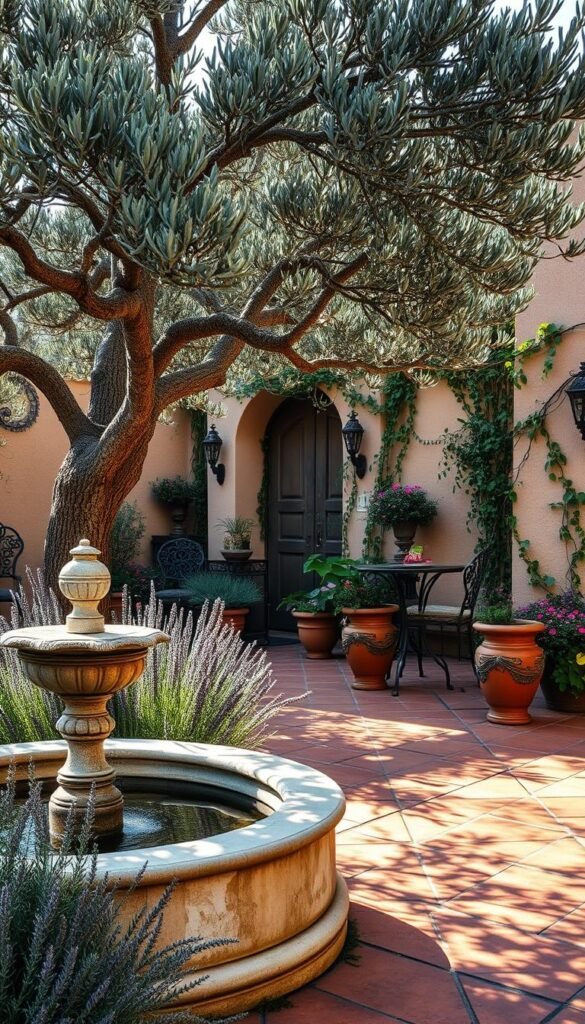Imagine stepping into a backyard that feels like a sunlit escape to coastal Europe. This design approach blends weathered textures, sculptural greenery, and earthy hues to create spaces perfect for relaxation or entertaining. At its heart lies a versatile centerpiece that thrives in various climates while adding timeless character.
The star of this style grows stronger with age, featuring silvery leaves and gnarled trunks that tell stories of sunny climates. These natural sculptures require minimal care yet deliver maximum visual impact, working equally well in spacious yards or compact patios.
Warm terracotta pots and sandy-beige gravel complement the foliage, mirroring the colors of seaside villages. Think sun-bleached stone paired with wrought iron accents for authentic charm. This combination creates inviting areas that feel lived-in yet polished.
Beyond looks, this approach offers practical benefits. Drought-resistant plants and durable materials mean less watering and upkeep. You’ll gain a personal retreat that boosts your home’s curb appeal while supporting local ecosystems.
Whether updating a balcony or redesigning an entire yard, these principles adapt to any space. They celebrate slow living through intentional choices that age gracefully, just like the iconic plants at their core.
Embracing the Mediterranean Lifestyle in Your Outdoor Space
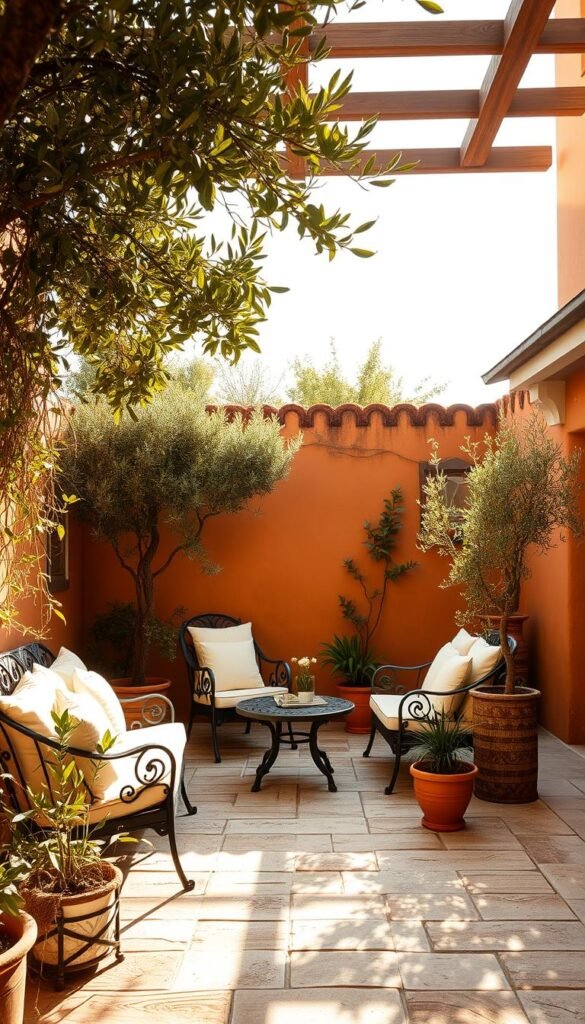
Picture your backyard as a sanctuary where time slows and senses awaken. This design philosophy turns ordinary areas into multi-functional retreats that mirror coastal European living. Let’s explore how to capture that effortless balance between beauty and purpose.
Discovering the Mediterranean Vibe
Start by defining zones for dining and relaxation. A curved stone bench under a pergola becomes your afternoon reading nook. Add textured cushions in spice-market hues for instant comfort. For evening gatherings, consider subtle water features that mask urban noise while cooling the air.
Incorporate fragrant rosemary bushes near seating areas. Their pine-like scent enhances meals and deters pests naturally. Use crushed gravel paths to connect spaces – they’re low-maintenance and mimic sunbaked village walkways.
Infusing Your Home with Warm Tones
Swap cool grays for earthy ochres and burnt siennas. A weathered terracotta planter holding olive branches adds rustic elegance. Layer lighting with lanterns featuring amber bulbs – they cast flattering glows like Mediterranean dusk.
Mix materials for depth: iron candle holders beside linen napkins, rough-hewn wood tables topped with smooth ceramic dishes. For cohesive vintage-modern blends, pair geometric tile accents with organic-shaped planters.
Remember, authenticity comes through patina. Let copper fixtures develop verdigris and allow stone surfaces to weather naturally. These imperfections tell your space’s unique story.
How to Create an Olive Garden Aesthetic: Mediterranean Touches with Olive Trees and Warm Tones
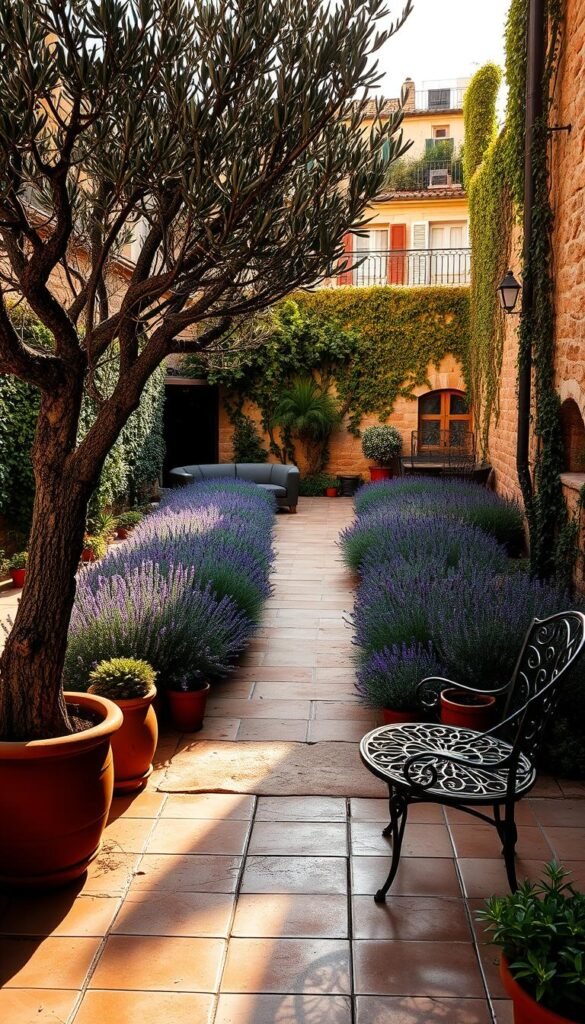
Transform your outdoor area into a timeless retreat by focusing on three essentials: materials, layout, and climate-smart choices. This approach blends rugged textures with practical beauty, creating spaces that age like fine wine.
Understanding the Core Elements
Start with hardscaping that mimics sunbaked earth. Warm-toned stone walls and gravel paths form your foundation, reducing water use while echoing coastal landscapes. Mediterranean landscape design thrives on these natural textures, requiring minimal upkeep.
Position olive trees as living sculptures. Their twisted trunks and silver-green leaves become focal points, especially when framed against terracotta pots or sandstone walls. These hardy plants need at least 6 hours of daily sun – perfect for south-facing spaces.
| Material | Purpose | Benefit |
|---|---|---|
| Crushed gravel | Pathways & patios | Drains quickly, stays cool |
| Limestone | Retaining walls | Reflects sunlight |
| Terracotta | Planters & decor | Adds warm color accents |
Balance structured and wild elements. Pair clipped boxwood hedges with free-growing lavender for contrast. This mix creates visual interest while supporting local pollinators – a win for both style and ecology.
Remember: drainage matters as much as sunlight. Slope gravel beds away from structures, and choose drought-resistant companions for your olive tree. Gardening aesthetic tips often highlight these functional details that make designs last.
Your space becomes cohesive when materials repeat in different forms. Use the same stone for benches and fire pits, creating rhythm without monotony. This technique grounds the design, letting your olive tree truly shine as the star.
Incorporating Olive Trees and Mediterranean Plants
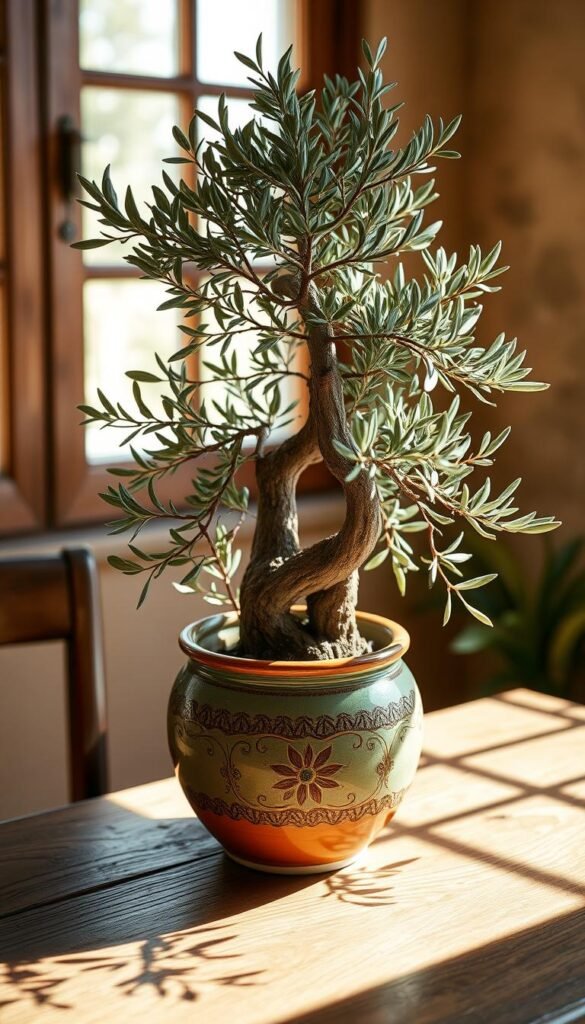
Your outdoor space gains instant character when combining sculptural trees with aromatic companions. These pairings create living art that thrives in sunny, dry conditions while offering sensory rewards.
Selecting the Ideal Olive Tree for Your Garden
Choose varieties based on your climate and space. The Skylark Olive Tree works well in containers, reaching just 8-10 feet tall. Its silver-green leaves shimmer against darker backdrops, making it perfect for framing entryways.
Ensure proper drainage whether planting in ground or pots. These trees dislike “wet feet” but handle heat like champions. Position them where they’ll receive 6+ hours of daily sunlight for best growth.
Complementary Mediterranean Flora: Lavender, Rosemary, and More
Pair your tree with plants that share its love for sunshine and lean soil. Purple lavender blooms contrast beautifully with silvery foliage, while rosemary adds vertical interest and kitchen-ready herbs.
| Plant | Key Features | Care Tips |
|---|---|---|
| Lavender | Fragrant purple flowers, drought-resistant | Prune after blooming |
| Rosemary | Evergreen, pest-repellent scent | Avoid overwatering |
| Santolina | Yellow blooms, deer-resistant | Trim in spring |
Layer plants by height for visual depth. Low-growing thyme makes excellent groundcover around tree bases, while taller sage plants add mid-level structure. This approach maximizes textural contrast and supports pollinators.
For year-round appeal, mix evergreen shrubs with seasonal bloomers. Your garden stays lively even when some plants go dormant, maintaining that coveted Mediterranean charm.
Choosing Warm Tones and Terracotta Accents
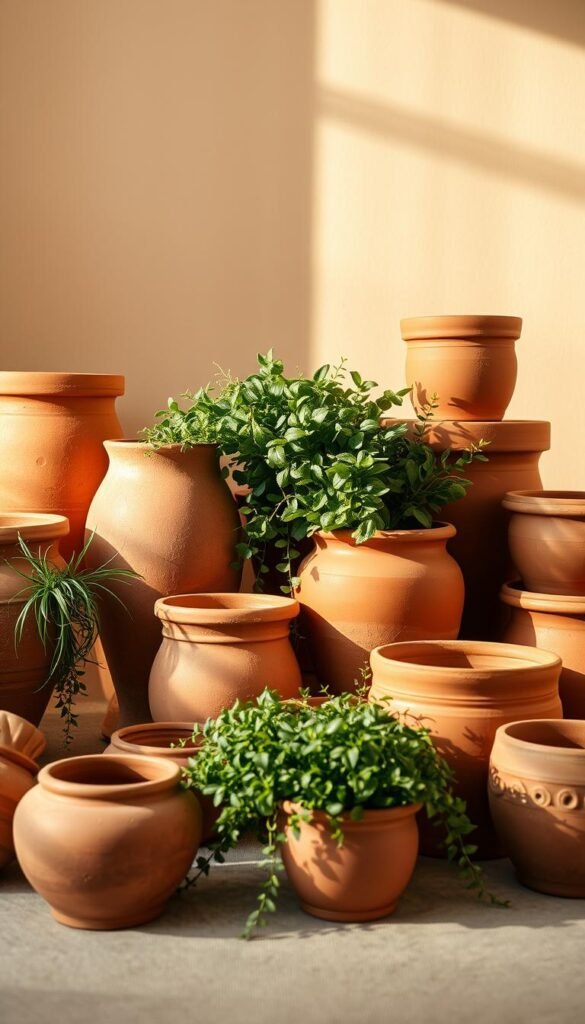
Envision a palette drawn from sun-drenched hills and clay-rich soils. Earthy reds, golden ochres, and muted blues create instant warmth in any space. These colors mirror Mediterranean villages where every wall and pathway tells a story of sunlight and simplicity.
Start with a neutral base of sandy gravel or limestone pavers. These materials keep surfaces cool underfoot while letting your terracotta pots pop. For urban spaces, try clay containers in varying sizes – they add rustic charm without overwhelming small areas.
Balance bold cobalt blues and mustard yellows against softer backgrounds. A single azure mosaic tile wall becomes art when framed by beige stones. Use terracotta roof tiles as decorative edging or repurpose them into unique plant markers.
Layer textures for depth. Pair matte clay urns with glossy ceramic lanterns near seating areas. This mix catches sunlight differently throughout the day, creating subtle visual interest. Remember: your silvery-leafed centerpiece shines brightest when surrounded by warm, earthy tones.
Finish with accents that age gracefully. Let copper fixtures develop natural patina and choose unglazed pots that weather beautifully. These elements grow more characterful over time, just like the landscapes that inspire them.
Lighting, Focal Points, and Natural Ambiance
When the sun dips low, your outdoor space reveals its hidden magic. Thoughtful illumination transforms functional areas into enchanting retreats, blending practicality with poetic charm. Let’s explore how light sculpts your garden’s evening personality.
Highlighting the Olive Tree’s Silvery Foliage
Position uplights at the base of your tree to cast dramatic shadows through its leaves. This technique turns twisted branches into living art against walls or pergolas. For subtlety, weave solar-powered fairy lights through lower foliage – they’ll glow like fireflies without overpowering the space.
Using Soft Lighting to Enhance the Mediterranean Charm
Layer amber-toned lanterns along pathways and cluster them on stone tables. Their warm radiance mimics candlelit village squares. Pair with low-voltage path markers to guide footsteps while maintaining that golden-hour atmosphere.
Remember: less is more. Use lighting to frame, not flood. A single spotlight on a terracotta wall or dimmable string lights above seating creates intimacy. These elements work together to celebrate your garden’s natural beauty long after sunset.

